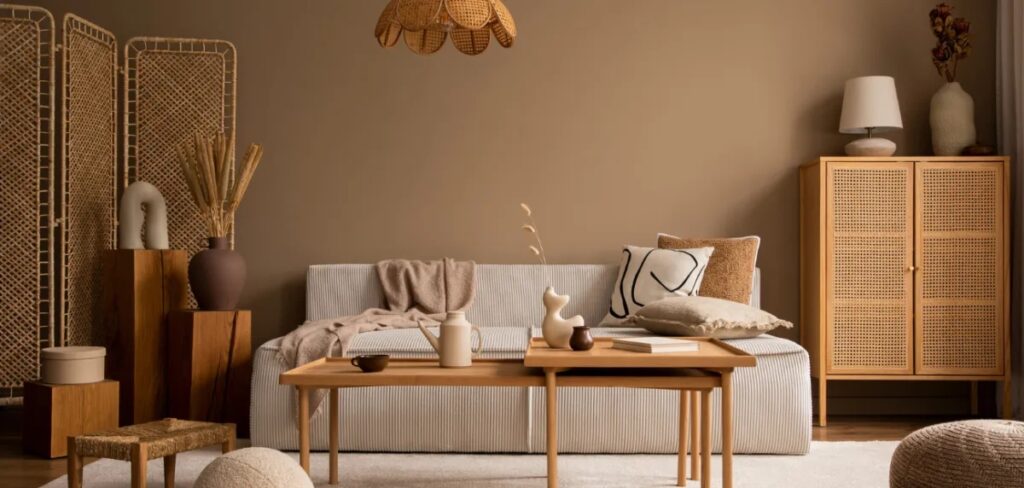Rattan brings warmth to any interior space it enters. From cane frames to chair backs, adding touches of fast-growing rattan adds charm.

Are you aware that both your porch’s wicker furniture and the arched cane bookshelf at your favorite coffee shop may be made from the same material – rattan? Rattan has long been used in interior design, most notably during the 1970s.
Rattan may appear similar to bamboo, but its flexibility makes it an excellent material choice for furniture and framing projects. Furthermore, eco-conscious clients increasingly appreciate rattan as an eco-friendly material option. Real estate professionals report increased client interest in sustainability.
Rattan 101 Rattan(link is external) is a type of climbing palm whose flexible stems can be used to craft cane furniture, while smaller strips cut from them may also be woven into mats, baskets or flexible coverings.
Brooke Moore of California-based presale home renovation company Freemodel describes rattan as a sustainable material due to its fast-growing nature, saying “rattan can be harvested in just two or three years!” unlike other types of wood which require 20-30 years for growth and harvest.
Still, sustainability can be difficult to define and measure. Rattan, like bamboo, thrives in tropical regions; thus the energy required to transport it from Asia, Africa and Australia impacts its sustainability. Clients interested in truly eco-friendly products should work with someone familiar with its origin and production process.
Rattan Trends in Home Design
Bilal Rehman(link is external), an interior designer of Generation Z origin who owns Bilal Rehman Studio in Houston. Rehman recommends the material for bohemian, mid-century modern, coastal interior spaces as a top way to use rattan in home designs.
Here’s how Moore and Reman suggest using rattan in your next interior design project.
Rattan headboards Want to spice up a home listing during staging? Add visual interest and warmth with the yellow-brown hue of rattan weave by including one in your space. Rattan headboards
Moore says you can DIY this look by filling a headboard frame with rattan, creating a soft wooden look in any room – ideal for creating inviting beds!
Rattan-backed chairs have become increasingly popular over time. To recreate its look and mass produce it with less eco-friendly materials such as resin or vinyl.
Moore states, “Jeanneret and Cesca chairs are two well-known midcentury modern chair designs frequently utilized with rattan material,” adding:
Rattan frames
Have you noticed them yet? Sooner rather than later, you’re sure to come across rattan cane framing mirrors and art at various big-box home decor stores – an easy way to incorporate this unique material into the living room or bedroom decor.
Rehman was intrigued to come across mirrors framed with rattan rather than metal, which offered him the unique opportunity to combine glamorous mirrors with rougher aesthetics such as rattan.
Stained Rattan Webbing
While some may enjoy the warm natural hue of rattan webbing or wicker furniture, its natural shade may not suit every setting. Rehman suggests staining it instead – an approach he finds particularly helpful (and sustainable) when dealing with vintage pieces of this nature.
“Rattan tends to have a lighter tan-orange hue that blends seamlessly into its surroundings; when stained to blend into any given environment, only its textural element remains, creating stunning results,” states Richardson.
Finding Sustainable Rattan Resources and Retailers
Rattan is among the many eco-friendly materials used for home projects or renovations. Clients looking to reduce environmental impact often employ various sustainable materials like cork, recycled glass and reclaimed wood in their design projects or renovations.
Moore and Rehman both advise clients searching for high-quality, sustainable rattan to conduct extensive research or partner with an expert who does. Rattan can easily be substituted by other materials; even authentic pieces may be transported or produced in ways that undermine its sustainability; to avoid these pitfall, Moore recommends clients look for companies holding green accreditations such as Forest Stewardship Council certification (FSC).


